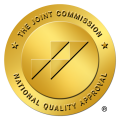Treating Veterans’
PTSD and SUD
When left unchecked, PTSD in veterans can lead to health risks and even substance abuse. So what’s next for PTSD treatment?
Article Contents
What is Trauma?
The veteran population is at particularly high risk for developing both post-traumatic stress disorder and substance use disorder, leaving many wondering how to get a handle on SUD and PTSD treatment. If you are struggling with PTSD and SUD, do not give up hope. While it may be challenging, there is treatment for veterans’ PTSD, from medication and behavioral therapies to support groups and individualized care.
Trauma refers to a mental or emotional response to a significantly disturbing event that causes psychological distress. Trauma can range in severity and impact, from going through a divorce or losing a loved one to experiencing sexual assault or combat. After a natural period of shock and denial, many may experience the onset of more common trauma symptoms, including:
- Mood shifts and unpredictable emotions
- Bursts of anger
- Feelings of guilt and shame
- Flashbacks to the event
- Constant feelings of despair and sadness
- Feeling isolated
- Physical stress symptoms (e.g., difficulty sleeping, headaches, nausea)
What Causes Trauma?
Because trauma refers to our psychological reaction to an event we perceive as disturbing, what causes trauma is not limited to a set list of events. Trauma can be generally organized into three areas: complex trauma, developmental trauma disorder, and post-traumatic stress disorder.
Types of Trauma
Complex Trauma
While trauma can happen in one-off events, complex trauma refers to a child’s repeated exposure to traumatizing events. These events are often invasive and severe, referring to the effects of abuse and neglect. Because complex trauma often begins in childhood, the long-term impacts of trauma are often compounded by impaired development and lack of secure attachments.
Developmental Trauma Disorder
Developmental trauma disorder also refers to early childhood trauma (neglect, abandonment, abuse) in the first three years of life. This type of trauma may not be caused intentionally, instead of resulting from the caregiver’s lack of understanding of the child’s needs. Nonetheless, it can significantly interrupt healthy psychological development.
Post-traumatic Stress Disorder
Post-traumatic stress disorder refers to the experience of witnessing an event that strikes terror, extreme fear, hopelessness, or despair into an individual. It is characterized by recurring symptoms, thoughts, and memories of the event.
What is PTSD?
Post-traumatic stress can best be understood as an overgrown survival and fear response. When we experience an event that scares us, our brain immediately sends our body into “fight-or-flight” mode, which flushes our system with adrenaline, tenses our muscles, and reduces support to all systems non-essential to survival.
For many, once the event has passed, their systems slowly relax, and symptoms of trauma fade over time. For others, however, these systems remain chronically activated, contributing to states of hyperarousal and numbness, alongside often terrifying flashbacks.
When these trauma symptoms last longer than a month and are severe enough that they interfere with work and personal life, they could constitute PTSD.
How Many Veterans Have PTSD?
While it is difficult to place an exact figure on the number of veterans with PTSD, studies have found rates of PTSD related to combat to range from 10-30% depending on the area of service.1
Estimates by the U.S. Department of Veteran Affairs place VA PTSD rates at roughly:1
- 11-20% of veterans who served in Iraq or Afghanistan
- 12% of veterans who served in the Gulf War
- 30% of veterans who served in Vietnam
Many cases of VA PTSD may go unreported, as veterans may face the pressures of social stigmas against talking about mental health.
Risk factors for PTSD in Veterans
What transforms an acute trauma response (trauma at the time of the event and directly after) into a more long-lasting trauma or PTSD in veterans depends on several factors. Genetics may play a role, alongside personal resilience and coping skills, support system, intensity and duration of the trauma, and more.
Sexual Assault in the Military
Sexual assault may also impact the risk of PTSD in veterans. Estimates place the rate of sexual assault against women in the military at roughly 23%, although 55 of 100 women and 38 of 100 men report experiencing sexual harassment in the military.1
Beyond veterans, women in general experience higher rates of PTSD, with about 8% of women developing PTSD in their lifetimes as opposed to 4% of men.2 In part, the increased rate of PTSD diagnosis for women may be related to the heightened rate of sexual assault experienced by women.
Combat Factors
Combat factors that can contribute to TSD include:3
- Severe trauma
- Longer deployment time
- A higher number of deployments
- Combat exposure
- Discharging a weapon
- Seeing someone injured or killed
- Deployment-related stressors
- Lower military rank
- Head injury
Non-combat Factors
Non-combat factors that contribute to PTSD can include:3- Younger age at the time of trauma
- Prior psychological issues
- Low social support from friends, family, or community
- A history of adverse life events or prior trauma
- Lower socioeconomic status
- Lower education
- Racial minority status
Signs and Symptoms of PTSD

An estimated 700,000 Vietnam veterans have sought trauma care since the war, with as many as 500,000 U.S. troops who served in Iraq and Afghanistan having been diagnosed with PTSD.3 Individuals who suffer from PTSD may experience a range of symptoms, and these effects are often divided into four categories: re-experiencing avoidance, mood and behavioral, and hyperarousal symptoms.
Reliving Events
Re-experiencing symptoms or reliving events refer to intense flashbacks that transport an individual back to the traumatic event. These symptoms come in the form of PTSD nightmares, frightening thoughts, and often extremely realistic flashbacks that can trigger physical responses (heightened heart rate, increased breathing, tense muscles, sweating) that make one feel as though they’re experiencing their trauma on a loop.
Avoidance Symptoms
While not as intense as PTSD nightmares, avoidance symptoms refer to choosing to avoid places, activities, people, thoughts, or feelings that stir the memory of your original trauma. Avoidance symptoms can provide a significant obstacle to PTSD treatment, as they may prompt the individual to avoid instead of facing their experience.
Persistent Negative Emotions
A relentless bad mood and negative emotions are core features of the PTSD symptom category of mood and behavioral PTSD symptoms. Alongside negative effects, mood and behavior symptoms can include pessimistic thoughts (about yourself and others), difficulty remembering core details of the trauma, and warped memories of the event that trigger guilt and shame.
Hypervigilance or Hyperarousal
Many might recognize hyperarousal symptoms best in the feeling of being perpetually “on edge.” With hyperarousal symptoms, you may find yourself easily startled, prone to angry outbursts, and experiencing difficulty sleeping.
Health Risks Associated with PTSD
Alongside the signs and symptoms of PTSD, untreated PTSD in veterans can lead to life-long health risks.
Substance Abuse
Substance abuse is a health risk often associated with PTSD in veterans. The original National Vietnam Veterans Readjustment Study found that 74% of Vietnam veterans with a PTSD diagnosis also had a substance use disorder (SUD). A more recent study found that 76% of veterans who had a PTSD diagnosis also met the criteria for alcohol or substance use dependence.3
Chronic Pain
Studies have found that for veterans returning from deployment in Afghanistan and Iraq, chronic pain ranks as one of the most frequently reported symptoms. Additional research suggests that VA PTSD withstanding, roughly 15-35% of chronic pain patients also have a PTSD diagnosis.3
Mental Health Issues
People with PTSD are at three to five times the risk of experiencing major depressive disorder (MDD) in their lives than those without PTSD. Research has found that the dual diagnosis of MDD and PTSD occurs at a rate of roughly 52%. Anxiety is also a commonly co-occurring mental health issue for PTSD in veterans.3
Controlling PTSD
When it comes to managing PTSD in veterans, there are four core areas to target: lifestyle, mindfulness, positive thinking, and peer support.
Lifestyle
It is important to take time to figure out what you need in your lifestyle to create a space of safety and comfort that helps manage stressors and may help reduce access to triggering memories.
Mindfulness
Many with PTSD have found that mindfulness techniques have proven particularly effective for training the tools to remain in the present moment, acceptance, and an ability to live and maintain wellbeing despite the existence of trauma.
Positive Thinking
It’s easy to get stuck in cycles of negativity, rumination, and paranoid thinking, so veterans should learn to identify when they are about to begin spiraling, so they can then suppress those habits and instead focus on the positive.
Peer Support
A strong social support system can make a world of difference when it comes to PTSD treatment. Having people who support you, whether that’s through support groups, friends, or family, can help you focus on the present moment instead of isolating as PTSD grows worse.
PTSD and Substance Abuse Disorders
Because VA PTSD and substance abuse disorders co-occur at such high rates (an estimated 76% of veterans with PTSD also qualify for SUD), many veterans find themselves in the position of trying to figure out which to handle first or how to handle symptoms at all.3
When it comes to treating PTSD and SUD as part of a dual-diagnosis, research has found that using evidence-based treatment approaches (like CBT and exposure therapy) to target parts of both disorders can prove effective at reducing symptoms and improving wellbeing.4
Treatments for PTSD
When it comes to treating VA PTSD, there are many options available, with more in development each day.PTSD Medications
While there is no single PTSD medication to “cure” PTSD, there are many medications that may help relieve its symptoms. Certain SSRIs and SNRIs medications often used to treat depression may help with VA PTSD, including fluoxetine, sertraline, paroxetine, and venlafaxine.
EMDR
Eye-movement desensitization and reprocessing (EMDR) is a type of therapy that reduces the emotional intensity of a traumatic event. The care provider will have the individual focus on a moving object, like a pencil moving back and forth, to help them stay grounded in the present as they tell the events of their trauma.
Trauma-informed Care
Trauma-informed care (TIC) is an approach to care that suggests health providers should act under the assumption that their patient has more likely than not experienced some sort of trauma. This philosophy ensures that the nature of care meets the trauma-informed needs of the patient.
Psychotherapy
Psychotherapy is a general umbrella term referring to a large range of talk therapies, including cognitive-behavioral therapy, dialectical behavioral therapy, psychodynamic therapy, and more. These programs typically run for six to twelve weeks and can include a variety of other PTSD treatments.
CBT
Cognitive-behavioral therapy (CBT) is a type of talk therapy that helps patients identify their thoughts and feelings and to build strong coping skills so they can develop healthier habits that improve their wellbeing and quality of life.
Physical Exposure
Exposure therapy typically involves repeatedly talking about or revisiting the site of the trauma to help reduce its emotional intensity and power over us. Exposure may be used alongside EMDR and other PTSD treatments.
TMS
Transcranial magnetic stimulation (TMS) helps target mood regulation by transmitting harmless and painless magnetic pulses to stimulate specific areas of the brain. Many have found TMS significantly helpful in relieving depressive symptoms of major depressive disorder.5
Resources
https://www.ptsd.va.gov/understand/common/common_veterans.asp
https://www.ptsd.va.gov/understand/common/common_adults.asp
https://www.ncbi.nlm.nih.gov/pmc/articles/PMC5047000/
https://www.ptsd.va.gov/professional/treat/cooccurring/tx_sud_va.asp
https://www.sciencedirect.com/science/article/pii/S1935861X16300389




